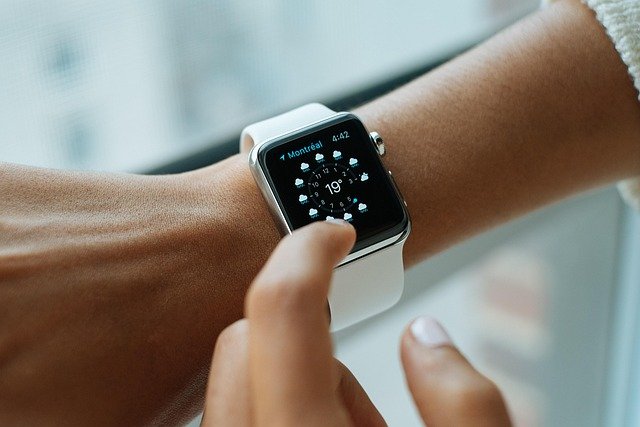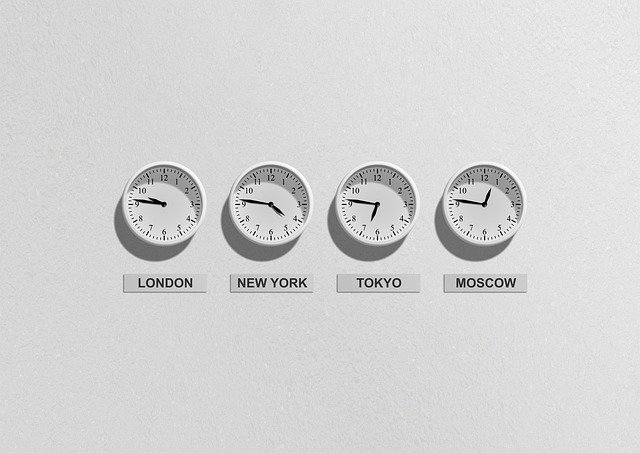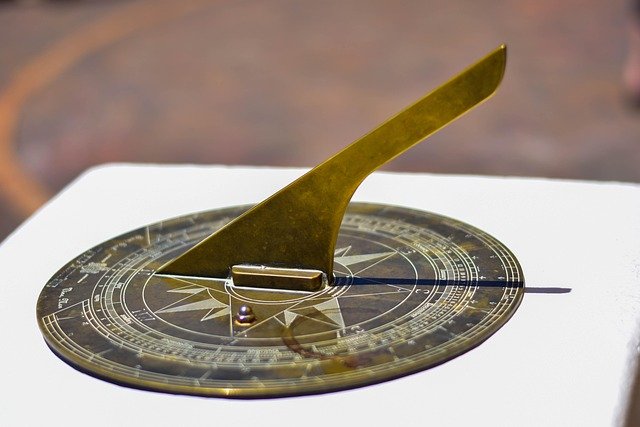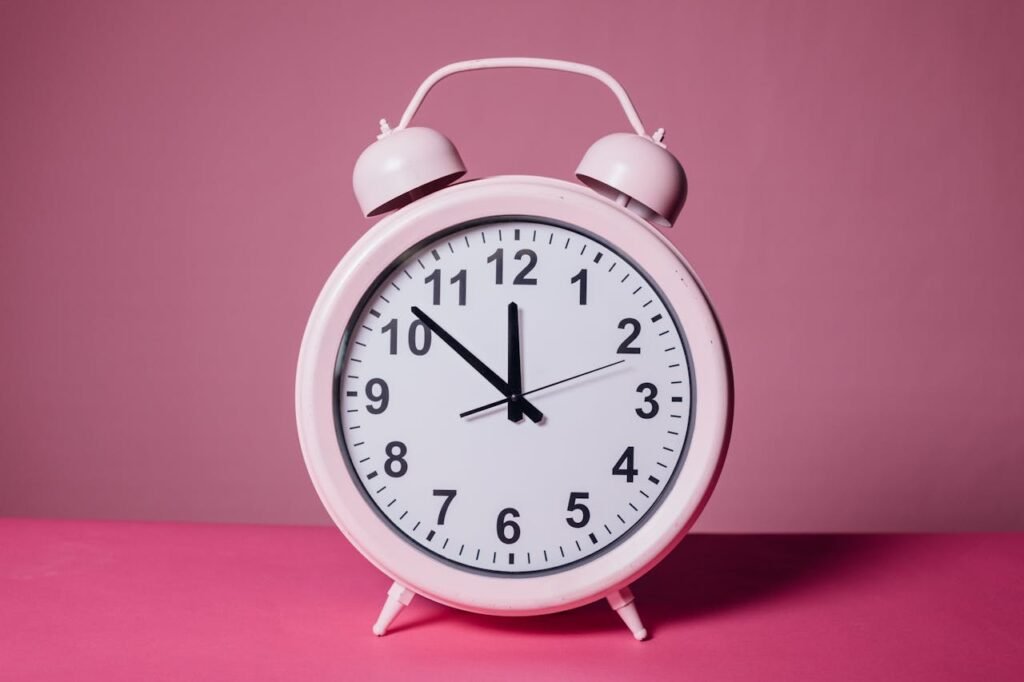You can’t see it. You can’t touch it. But you can feel it passing every moment — that’s time.
From the ticking of a clock to the changing of the seasons, time shapes everything we do. It tells us when to wake up, when to celebrate birthdays, when flowers will bloom, and when the Sun will set. But have you ever stopped to ask, What exactly is time?
Time is more than just numbers on a watch. It’s a way to measure change. When something moves, grows, or ages, time is moving with it. People have been trying to measure time for thousands of years — from using shadows on sundials to building super-accurate atomic clocks.
In this article, we’ll explore what time really is, how humans learned to measure it, why we have days, months, and years, and how time connects to speed and movement. By the end, you’ll see that time isn’t just something that “goes by” — it’s one of the most fascinating parts of our universe.
What Is Time?
Time is the way we make sense of change. Without time, everything would seem to happen all at once. Imagine if day and night happened together, or if your birthday came at the same moment as last year’s — it would be confusing.
Time lets us put events in order. We can say this happened first, then this happened next. It gives us a way to measure how long things take, like how many minutes it takes to eat breakfast or how many days until a holiday.
Scientists sometimes describe time as a “dimension,” just like length, width, and height. But instead of measuring space, time measures when something happens.
Time in Nature
Long before people built clocks, they could still notice time passing by watching nature. The Sun rises, moves across the sky, and sets every day. The Moon changes shape through its phases every month. Seasons shift from warm to cold and back again every year.
These patterns were the first “clocks” for humans. Our ancestors learned to read them to plan their lives — when to plant seeds, when to hunt, when to prepare for winter.
The First Ways People Measured Time
Thousands of years ago, people began creating tools to measure time more precisely. One of the earliest tools was the sundial. It’s simply a stick (called a gnomon) standing upright. As the Sun moves, the shadow of the stick moves, showing the hour of the day.
Another early method was the water clock. This was a container with a small hole at the bottom. Water dripped out at a steady rate, and the amount of water left could show how much time had passed.
In some places, people used hourglasses — glass containers with sand flowing from one side to the other. Just like water, the sand flowed at a predictable speed, so they could measure minutes or hours.
Why Humans Needed Timekeeping
Measuring time became important as human life got more organized. Farmers needed to know the right seasons to plant and harvest crops. Builders needed schedules to finish work. Traders needed to agree on meeting times. Religious groups used time to know when to gather for prayer.
Without a way to measure time, life would be unpredictable and chaotic. The ability to divide time into hours, minutes, and seconds gave people a way to coordinate and plan.
Modern Clocks

Clocks today are everywhere — on walls, in our pockets, even on our wrists. But while they may look different from the tools used hundreds of years ago, modern clocks still follow the same basic idea: measure something that moves at a steady, predictable pace.
Mechanical Clocks
Mechanical clocks have been around for centuries, but they became much more accurate in the 1600s with the invention of the pendulum clock. A pendulum swings back and forth at a regular rate, and this motion controls the turning of gears that move the clock’s hands.
In smaller mechanical watches, a coiled spring called a mainspring stores energy. As the spring unwinds, it powers the gears and keeps the hands moving. To keep accurate time, these clocks and watches need regular winding or movement from the wearer’s wrist.
Quartz Clocks
Quartz clocks, invented in the 20th century, changed everything. They work using a small quartz crystal that vibrates at an exact frequency when electricity passes through it. These vibrations act like tiny, precise “ticks” that the clock’s electronics count, turning them into hours, minutes, and seconds.
Quartz clocks are so reliable that many only lose a few seconds in an entire month — far more accurate than most mechanical clocks. That’s why they’re used in most wristwatches, wall clocks, and alarm clocks today.
Digital Timekeeping
Digital clocks don’t have hands or ticking sounds. Instead, they display time as glowing numbers. They still rely on a quartz crystal inside, but a small computer chip counts the crystal’s vibrations and shows the time on a screen.
Digital timekeeping makes it easy to add extra features — like alarms, stopwatches, and even world clocks that show the time in other cities.
Atomic Clocks
The most accurate timekeepers in the world are atomic clocks. Instead of measuring the swing of a pendulum or the vibration of quartz, they measure the natural vibration of atoms — most often cesium or strontium.
Atoms vibrate at an extremely stable and predictable rate, which makes them perfect for keeping time. An atomic clock can run for millions of years and still be correct to within one second.
Atomic clocks are so precise that they form the foundation for Coordinated Universal Time (UTC), the official time standard for the whole world. They’re also used in GPS satellites, so the navigation on your phone can work.
Why Accuracy Matters
In our daily lives, being a few seconds off might not seem important. But in science, navigation, and technology, accuracy is everything. GPS, internet communication, airline schedules, and even space exploration all depend on clocks that keep exact time.
Modern clocks don’t just tell us the time — they help the world stay connected and keep life running smoothly.
Time Zones

If everyone on Earth used the exact same time, it would be very strange. You might wake up at what your clock says is “2 a.m.” even though the Sun is shining brightly outside. That’s because Earth is round and it spins, meaning not all places experience day and night at the same moment.
To solve this problem, the world is divided into time zones — large sections of Earth where all the clocks show the same time.
Why We Need Time Zones
Earth spins once every 24 hours. As it turns, different parts of the planet face the Sun while others face away. When it’s daytime in one place, it’s nighttime somewhere else. Without time zones, scheduling anything — from flights to online classes — would be nearly impossible.
The 24-Hour System
The Earth is divided into 24 main time zones, one for each hour of the day. Each zone covers about 15 degrees of longitude. Moving east from one zone to the next means adding one hour; moving west means subtracting one hour.
The Prime Meridian
Time zones are measured starting from a line called the Prime Meridian, which runs through Greenwich, England. The time at this line is known as Greenwich Mean Time (GMT) or, in modern use, Coordinated Universal Time (UTC). Every other time zone is described as being a certain number of hours ahead of or behind UTC.
Real-World Examples
If it’s 12:00 noon in London (UTC+0), it’s:
- 7:00 a.m. in New York (UTC–5)
- 4:00 a.m. in Los Angeles (UTC–8)
- 8:00 p.m. in Beijing (UTC+8)
- 11:00 p.m. in Sydney (UTC+11)
This system keeps local time in sync with the Sun, so “noon” still happens when the Sun is roughly highest in the sky.
Daylight Saving Time
Some countries adjust their clocks during part of the year to make better use of daylight. In spring, they move the clocks forward by one hour (“spring forward”), and in autumn, they move them back (“fall back”). Not every country does this, and the start and end dates can vary.
Why Time Zones Matter Today
Time zones are essential for global life. Airplane schedules, shipping routes, live TV broadcasts, online meetings, and even your smartphone’s weather app all rely on knowing the correct local time in each zone.
Without time zones, modern life would be a confusing mess of mismatched clocks. They keep our world running in harmony, no matter where you are.
Why We Have Leap Years
A year is the time it takes Earth to travel around the Sun once. You might think that’s exactly 365 days — but it’s actually about 365 days and 6 hours. Those extra 6 hours add up over time.
After four years, the extra hours equal about 24 hours — one whole day. That’s why every four years we add one day to the calendar: February 29, also known as a leap day.
Leap years keep our calendars in line with the seasons. Without them, the dates for spring, summer, autumn, and winter would slowly shift until they were completely out of sync with the weather.
Coordinated Universal Time (UTC)
To keep the world synchronized, scientists use a standard called Coordinated Universal Time (UTC). It’s based on atomic clocks and is the same everywhere in the world. Local times are set by adding or subtracting hours from UTC depending on the time zone.
Time and Speed

Time isn’t just about clocks — it’s also closely connected to movement. When we talk about speed, we’re talking about how far something travels in a certain amount of time. The formula is simple:
Distance
Speed = __________
TimeIf you run 100 meters in 20 seconds, your speed is 5 meters per second. This link between time and movement is what allows us to measure travel distance, racing, or even how fast a planet moves through space.
Time Slows Down When You Go Faster (Relativity)
Here’s where things get really interesting. According to Albert Einstein’s theory of relativity, time itself can actually move at different speeds depending on how fast you’re going.
If you could travel close to the speed of light, you would experience time more slowly than someone who stayed still. This is called time dilation. Astronauts on the International Space Station move so fast around Earth that they actually age a tiny bit slower than we do on the ground — though the difference is just a fraction of a second.
This shows that time is not as fixed as we might think. It can stretch or shrink depending on speed and gravity.
Time and Seasons
Seasons are one of the clearest examples of how time shapes our world. They follow a regular, repeating pattern each year, and they affect everything from the weather to the food we eat. But why do we have seasons at all?
The Tilt of the Earth
Seasons happen because Earth isn’t standing straight up as it orbits the Sun. It’s tilted about 23.5 degrees on its axis. This tilt means different parts of the planet get different amounts of sunlight at different times of the year.
When the North Pole leans toward the Sun, the Northern Hemisphere gets longer days, warmer temperatures, and summer. At the same time, the Southern Hemisphere leans away from the Sun, bringing shorter days and colder temperatures — winter. Six months later, the situation is reversed.
How Seasons Change Over Time
Each season has its own personality:
- Spring – Days grow longer, temperatures rise, plants sprout, and animals become more active.
- Summer – The Sun is high in the sky, days are longest, and warmth encourages growth and outdoor activity.
- Autumn (Fall) – Days shorten, leaves change color, and many animals prepare for winter.
- Winter – Days are shortest, the Sun stays low, and cold weather slows plant and animal activity.
The Role of Daylight
The changing length of daylight is one of the main ways we notice time moving through the seasons. In summer, you might have light until late evening. In winter, it may be dark by late afternoon. These changes affect our routines, moods, and even our sleep patterns.
Seasonal Clocks in Nature
Many plants and animals live by “seasonal clocks.” Trees lose their leaves in autumn to save energy. Birds migrate in spring and autumn, following temperature and daylight changes. Farmers plant and harvest according to seasonal patterns, just as they have for thousands of years.
Why Understanding Seasons Matters
Knowing how seasons work helps us prepare and plan. It’s how we decide when to plant crops, store food, schedule festivals, or even plan school breaks. It’s also a key part of understanding climate and how our planet’s systems work together.
Seasons are nature’s way of showing us that time is more than just numbers on a clock — it’s the heartbeat of our planet.
How We Measure Longer Periods of Time
We use days to measure Earth’s rotation (one spin).
We use years to measure Earth’s orbit around the Sun (one trip).
We use months based on the Moon’s cycle around Earth.
By combining these measurements, humans created calendars — a system to organize days, months, and years so we can plan events far into the future.
Telling Time Without Clocks

For most of human history, there were no ticking clocks, phone alarms, or digital screens to tell you the time. Yet people still had to know when to plant crops, gather for meetings, or prepare for seasonal changes. To do this, they turned to the world around them, using nature as their timekeeper.
Reading the Sky
The most obvious “clock” was the Sun. By watching where it rose, how high it climbed, and where it set, people could tell the general time of day. The length of shadows was a big clue — long shadows meant morning or evening, short shadows meant midday.
The Moon was another guide. Its changing shape through the month helped people keep track of weeks. A full moon, for example, was a natural marker for events, celebrations, or harvest times.
Sundials
A sundial was one of the first tools humans made for measuring hours. A simple stick (called a gnomon) was placed upright in the ground. As the Sun moved across the sky, the stick’s shadow moved around in a circle. Marks on the ground showed the time.
Sundials worked well in sunny weather, but they were useless on cloudy days or at night — which is why people looked for other ways to measure time.
Water Clocks
In ancient Egypt, Greece, and China, people used water clocks, also called clepsydras. These were containers with a small hole at the bottom. Water dripped out slowly, and the level of water left told you how much time had passed.
Some water clocks were very fancy, with gears, dials, and even little mechanical figures that moved when the water reached certain points.
Candle Clocks
A candle clock was just a candle with evenly spaced markings along its length. As the candle burned, you could see how much time had passed by how far the wax had melted. Monks in medieval Europe often used candle clocks to keep track of prayer times during the night.
Hourglasses
Hourglasses — two glass bulbs connected by a narrow neck — worked in a similar way to water clocks, but used sand instead. The sand flowed from the top bulb to the bottom in a set amount of time. Sailors loved hourglasses because they worked even on ships that rocked in the waves.
Nature as a Timekeeper
Even without tools, people learned to read time from nature. The crowing of a rooster signaled dawn. The opening and closing of certain flowers told the time of day. Fishermen knew the best time to head out by watching the tides, which follow the Moon’s rhythm.
Time was everywhere — you just had to know where to look.
How Debsie Helps Kids Explore the Science of Time

At Debsie, we believe time isn’t just something to be read from a clock — it’s a living, moving part of our world that kids should experience. That’s why our lessons turn time into something hands-on, playful, and deeply memorable.
Instead of only reading about clocks and calendars, our students test time, measure it, and watch it in action. This helps them not just know about time but truly understand it.
Learning by Doing
Our partner teachers design activities where children interact with time in different ways:
- Shadow Tracking Challenges – Students measure their own shadows at different times of day and discover how the Sun’s position changes. This connects Earth’s rotation to daily time.
- Make-Your-Own Sundial – Using a stick, paper plate, or stones, kids build a working sundial and compare it to a real clock. This lets them see how ancient people told time.
- Season Watch Logs – Over weeks, children track changes in daylight length, temperature, and plant growth, learning why we have seasons.
- Speed Experiments – Using stopwatches, students measure how long tasks take and calculate speed — linking time directly to movement.
Making Connections Beyond the Classroom
Our lessons don’t stay trapped in a textbook. We encourage students to notice time in their daily lives:
- Understanding why they feel sleepier in winter evenings.
- Watching animals to see how they respond to daylight changes.
- Predicting sunrise and sunset times using patterns they’ve learned.
These connections make science feel personal and real — something they can carry with them everywhere.
Skills Beyond Science
Exploring time teaches much more than the science behind seconds, minutes, and seasons. Kids develop:
- Observation skills by noticing small changes in light and nature.
- Critical thinking by connecting those observations to patterns.
- Problem-solving when designing and testing their own time-measuring tools.
- Patience by working on long-term projects, like season tracking.
Why Kids Love It
Because our approach feels like a mix of science, mystery, and adventure, children get excited to learn. They see time not as “numbers on a screen” but as a powerful, invisible force shaping everything around them — from the flowers blooming in the garden to the speed of a racing car.
With Debsie, they’re not just memorizing time facts — they’re living them. And once a child experiences science in this way, their curiosity only grows.
Conclusion
Time is everywhere — in the ticking of a clock, the changing of the seasons, the way shadows move, and the speed of a running child. It’s not just numbers we read on a screen. It’s the rhythm of life itself, shaping when we wake, when we work, and when we rest.
From the earliest sundials to today’s atomic clocks, humans have always searched for better ways to understand and measure time. We’ve learned how Earth’s tilt creates seasons, how speed can bend the way we experience time, and how even animals follow nature’s clock without a single watch on their paws or wings.
Understanding time makes life richer. It helps us plan, solve problems, and see our place in the bigger picture of the universe. And for kids, it’s one of the best gateways into science — connecting physics, astronomy, biology, and everyday life.
At Debsie, we make sure that learning about time isn’t dry or abstract. Through fun projects, hands-on experiments, and guided exploration, we help kids live the science — from building their own sundials to tracking daylight changes through the seasons. We turn curiosity into confidence, and knowledge into lasting skills.
⏳ The best time to start is now. Sign up for a free trial class at Debsie.com and watch your child discover that time isn’t just something to keep — it’s something to explore, understand, and enjoy.
Read Next:
